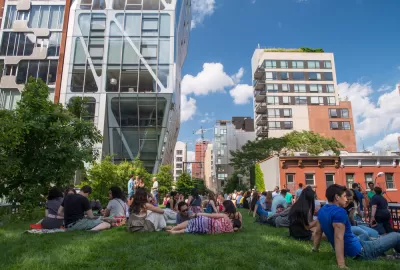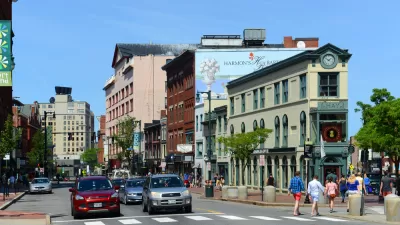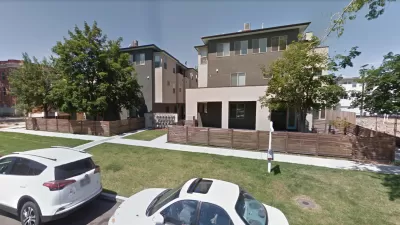While urbanists target zoning reform to help build more housing in desirable neighborhoods, other neighborhoods around cities are being left behind to languish, according to this opinion piece published by Forbes.

An op-ed by Pete Saunders critiques the effects of zoning reform that only seeks to build walkable urbanism in already desirable neighborhoods.
Writing for Forbes, Pete Saunders launches an investigation of the skyrocketing housing prices by identifying several root cases of the common problem around U.S. cities. According to Saunders changing metropolitan economies, geography and the nature of redevelopment versus greenfield development are all contributing to the trends in the housing market. "But perhaps the greatest factor driving prices upward in cities is the growing preference for walkable urbanism (WU)," adds Saunders.
And therein the problem lies, according to Saunders's argument. Given that walkable urbanism is in finite supply, it's troubling that urbanists tend toward tunnel vision, or "a laser focus on a select group of neighborhoods in a given city that boosts prices in the most desirable areas, and correspondingly drops them in similarly constructed but less desirable neighborhoods."
Saunders calls on a housing price analysis and data visualization of New York City completed by Constantine Valhouli. Saunders uses that evidence to reach the conclusion that while zoning reform pursued by urbanists to help build new walkable urbanism might achieve those ends in certain desirable neighborhoods, it might also lead to negative, unintended consequences in many other parts of cities.
FULL STORY: Zoning Reform: Not (Entirely) The Answer

Planetizen Federal Action Tracker
A weekly monitor of how Trump’s orders and actions are impacting planners and planning in America.

Maui's Vacation Rental Debate Turns Ugly
Verbal attacks, misinformation campaigns and fistfights plague a high-stakes debate to convert thousands of vacation rentals into long-term housing.

Restaurant Patios Were a Pandemic Win — Why Were They so Hard to Keep?
Social distancing requirements and changes in travel patterns prompted cities to pilot new uses for street and sidewalk space. Then it got complicated.

In California Battle of Housing vs. Environment, Housing Just Won
A new state law significantly limits the power of CEQA, an environmental review law that served as a powerful tool for blocking new development.

Boulder Eliminates Parking Minimums Citywide
Officials estimate the cost of building a single underground parking space at up to $100,000.

Orange County, Florida Adopts Largest US “Sprawl Repair” Code
The ‘Orange Code’ seeks to rectify decades of sprawl-inducing, car-oriented development.
Urban Design for Planners 1: Software Tools
This six-course series explores essential urban design concepts using open source software and equips planners with the tools they need to participate fully in the urban design process.
Planning for Universal Design
Learn the tools for implementing Universal Design in planning regulations.
Heyer Gruel & Associates PA
JM Goldson LLC
Custer County Colorado
City of Camden Redevelopment Agency
City of Astoria
Transportation Research & Education Center (TREC) at Portland State University
Jefferson Parish Government
Camden Redevelopment Agency
City of Claremont




























